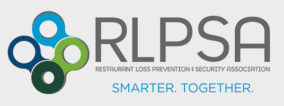What’s in the plan for 2016 to expand the business, increase profits, or get more market share…and how can that be protected?
The 2015 QSR state-of-the-industry survey given to hundreds of restaurant operators reported that 36% of employers are anticipating offsetting increased minimum wage levels by leveraging digital innovations to increase efficiency of operations. Restaurant operators surveyed gave “Digital Innovations” a 3.02 ranking on a scale of 1 (not very important) to 5 (extremely important).
Experts say the move to digital technology is inevitable
Here’s some data shared by employers who responded to the QSR survey.
What “customer-facing technologies” do you use?
- Call ahead = 47% of respondents.
- Online ordering = 42% of respondents.
- Mobile ordering = 35% of respondents.
- Mobile payments = 27% of respondents.
- Text messaging = 21% of respondents.
- Employee handheld devices = 17% of respondents.
- Pay-at-the-table = 15% of respondents.
What percent of sales comes via digital ordering (mobile/online)?
- 1-10% of survey respondents said 45% of sales comes from digital ordering.
- 11-25% of survey respondents said 17% of sales comes from digital ordering.
- 26-50% of survey respondents said 5% of sales comes from digital ordering.
More than 50% of survey respondents said 3% of sales comes from digital ordering.
What’s Trending Now?
The trend toward digital customer interface is growing rapidly. Employers in the survey reported that they are likely to employ online ordering, mobile ordering, mobile payments and mobile loyalty programs, text messaging services, and employee handheld devices in the next 3-5 years.
Mobile payments were listed as “very likely” by 19% of respondents; mobile ordering was listed as “very likely” 18%. Mobile loyalty programs were cited as “very likely” by 20% of respondents, while 53% of respondents reported that they give loyalty dollar discounts.
Of course, adopting any of these new digital-enhanced actions will require significant investment in software, equipment, and training. An overwhelming 70% of employers reported that they intend to invest more capital in their digital presence in the coming year.
How Will Loss Prevention Handle the Changes?
LP and security plans will have to address a number of issues concerning increased digital technology: payment data theft, breaches in software, operating systems with “patches” creating new vulnerabilities, lack of standardized mobile pay security walls, and more sophisticated fraud perpetrators. Effective security plans will pay attention to actions such as removing sensitive data from their files, using encryption to prevent hacking, and adding increased security levels.
Steps for Enhanced Digital Security
Developing an up-to-date, digitally-focused security plan must be top priority.
- Have flexible policies and procedures that can be amended quickly as the digital environment morphs and changes.
- Stay ahead of the curve. This includes constant monitoring and investigating of trends that can affect your establishment’s security plan.
- Schedule software analyses. Is the software you are using up-to-date? If you have been “plugging holes” to stay current, are the fixes holding? Have passwords been changed recently to protect vital information?
- Learn more about cybercrime to develop ways to prevent it, and to develop plans to react to it in the event you become a victim. Crime rings continue to threaten retail and restaurant operations. Counterfeit e-receipts, reflected in the increase in fraud cases, is one area that has led to stricter security measures.
- Include training (i.e., how to properly operate devices or how to protect customer information) for all personnel involved with digital transactions.
- Communicate your company’s mission of protecting payment account information to customers who are increasingly demanding that businesses increase security while handling their sensitive data.
What do Your Customers Want?
The industry is seeing a pronounced shift to self-service orders from customers’ smartphones, tablets and computers. Will Hernandez, in “Emerging Mobile Payments, Trends for Restaurants,” says, “Consumers, particularly millennials, now demand more ways to communicate with their favorite brands, and restaurants are no exception.” Domino’s Pizza CEO, Patrick Doyle, reports that 50% of the chain’s U.S. sales can be attributed to digital channels, including smartphones, tablets, and smartwatches. Starbucks’ new “Mobile Order & Pay” program has seen great success in test markets and will be rolled out to all states in 2016. Other technologies that restaurant operators should watch out for are mobile point-of-sale products, beacons, and bitcoins.
Don’t Fall Behind the Pack
Restaurants seek to give their customers faster, reliable, and more personal experiences through expanded digital technology. However, as this mobile digital industry evolves, loss prevention and security professionals must take prudent measures keep up with the changes while protecting their business and their customers.
About RLPSA
The Restaurant Loss Prevention and Security Association (formerly NFSSC) is an exclusive community of loss prevention professionals focused on helping its members minimize losses and reduce liabilities within the restaurant and food industries.
We are industry leaders sharing our collective expertise, knowledge and solutions to the challenges we face every day. Our goal is to make our members more efficient and successful in their careers by serving as the “go-to” resource for restaurant and food industry loss prevention and security professionals.
As a member-run organization, we share information about industry trends and connect a network of peers who understand the unique challenges of the job, and who collaborate to find the next best solution. We create a forum for discussion and problem-solving so that our members benefit from shared expertise. We provide professional development opportunities that are designed to meet the specific interests and concerns of restaurant and food industry professionals, and we advocate for regulations that will make our workplaces more safe and secure.
For more resources, attend our annual conference. Visit: http://www.rlpsaannualconference.com
